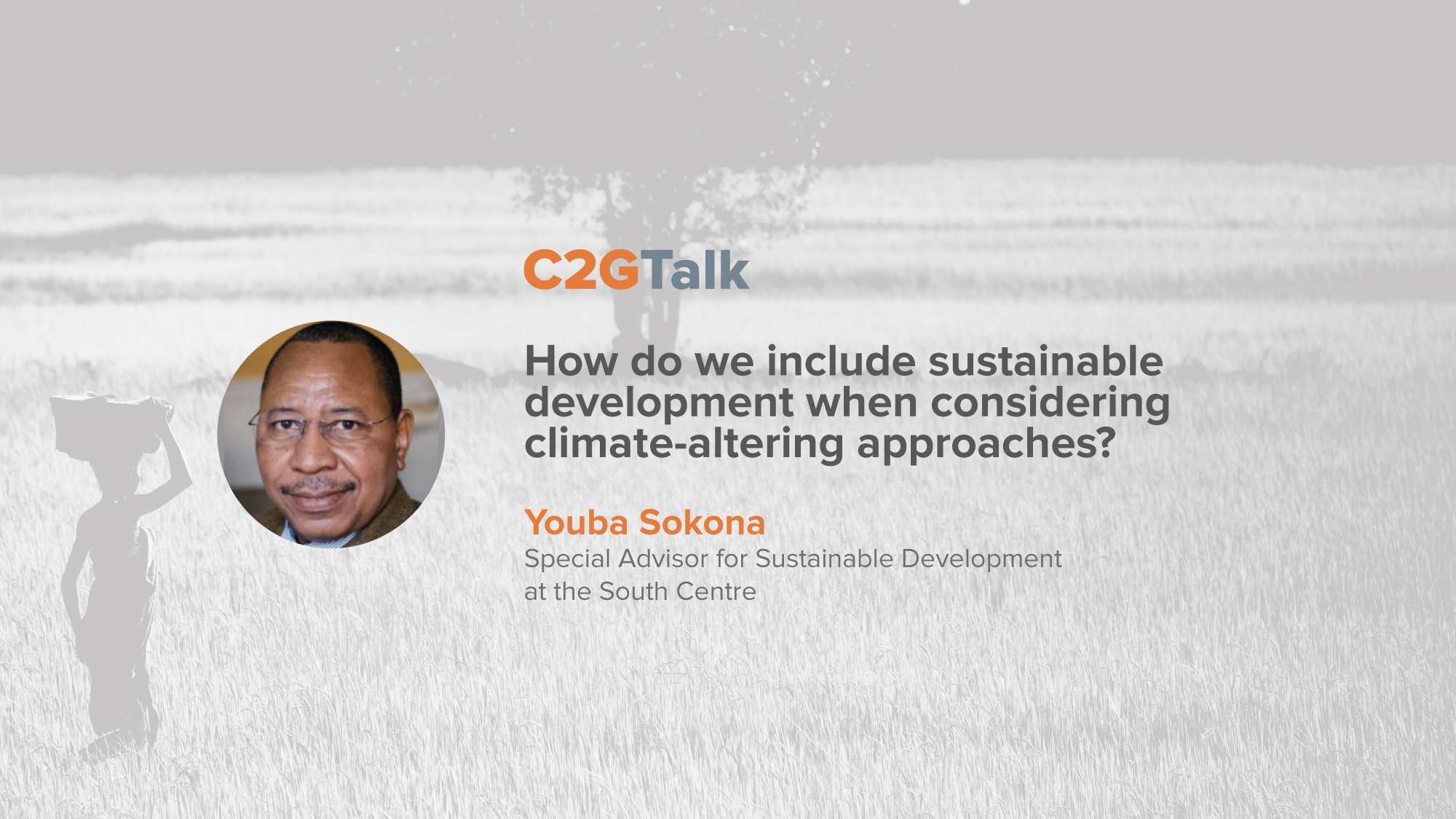The New Intergovernmental Panel on Climate Change Assessment Report: A Sobering Read

By Paul Rouse / 16 August 2021
On August the 9ᵗʰ, the world awoke to the stark news that we are on a code red for humanity. A last chance warning siren had been sounded by the world’s climate scientists.
The Intergovernmental Panel on Climate Change (IPCC), the UN’s expert advisors about climate change science, had published their latest report on the physical science basis for climate change as part of IPCC’s Sixth Assessment cycle.
Now, in the latest report –more advanced, more accurate and more reliable evidence than ever before — proves that humanity, you and I, are, unequivocally, causing global warming, and that without very rapid, very large-scale steps to reduce our emissions to zero, and then on top of that, remove yet more carbon directly out of the atmosphere, we face catastrophe.
Billions of people will face increasing harm from a broad range of risks, including, to mention just a few, water crisis, heat stress, biodiversity emergency, food security challenges, sea-level rise and changes in infectious disease spread.
What we are seeing with our own eyes and in daily news briefings from around the world, in the form of droughts, flooding, heat records being broken and huge wildfires reaping destruction around the planet have long been predicted by the IPCC experts. Now we have one more, perhaps final, opportunity to listen to those experts, take note and act.
So, what can we do?
Of these five scenarios, only two have a theoretical chance of delivering the 1.5 – 2 °C goals of the Paris Agreement (this being the maximum warming that the global community has jointly agreed can be tolerated).
What, then, are the measures outlined in these two special scenarios that mean we may yet be able to keep runaway heating under some form of control? How might we constrain heating to 1.5°C?
These two scenarios, called in the new report, the ‘intermediate scenario’ and the ‘very low emissions scenario’. Both require that we not only drastically and rapidly reduce our emissions to zero on or around 2050, but, that we also start to remove billions of tons of carbon dioxide directly from the atmosphere and store it in perpetuity, using techniques that are, at that scale imagined, untested and unavailable, and continue to do so at a growing rate for many decades. Oddly, this second part of the response – removing existing carbon from the atmosphere until well beyond the end of the century was not specifically mentioned in the Summary for Policy Makers as it had been in the IPCC’s previous Assessment and its Special Report on 1.5°C.
The code red wakeup call must surely then rouse us into action to cut our emissions faster, and to rapidly accelerate our capacity to remove CO₂ from the atmosphere, using Carbon Dioxide Removal (CDR).
CDR: Necessary but not easy or risk-free
Secondly, if CDR is to be implemented at the speed and scale suggested in the IPCC’s scenarios governments and other stakeholders will have to act urgently to create policy incentives that drive research investment and facilitate the innovation chain toward successful deployment, while ensuring that any research, testing or potential use is safe and effectively governed.
Finally, a global approach to monitoring and reporting our progress on CDR will be required. We will have to know how much carbon is being removed, at what speed and with what effects. We must know if removed carbon is being permanently sequestered, or whether it is leaking back out into the atmosphere slowly over time, leaking, for example, from the underground, or suddenly as in trees burning in a wildfire. We will need to track whether we are delivering on any promises made, and perhaps have mechanisms to deal with delivery failure. Again, this too requires inclusive governance that will be challenging and far-reaching.
This is where C2G comes in, with its simply expressed mission to catalyse effective and inclusive governance for emerging, climate-altering techniques. We work to encourage global conversations that will help create a well-informed, inclusive, society-wide debate about the potential of various approaches to altering the climate, such as CDR.
However, even with an expedited global effort to find ways to safely remove billions of tons of CO₂ from the atmosphere, it may simply be too challenging and too late. In addition, as the new IPCC report says, CDR can affect the availability and quality of water, food production and biodiversity, creating still more challenges that require attention.
To take one simple example, even the planting of new trees is problematic and creates governance challenges. They may, in the short to medium term, remove some carbon, but trees die, and they then release greenhouses gasses.
Even when they are growing, trees can have negative impacts – they take up land that could have been used for food production or the growing of biofuels, trees themselves emit methane and nitrous-oxide, both potent greenhouse gases, and large plantations can affect weather. Plantations with darker leaves emit longwave radiation, which may actually warm the lower atmosphere.
Many other CDR techniques also give rise to challenges, from ideas about artificially changing the oceans’ capacity to absorb CO₂ to engineering techniques to suck carbon out of the air. There are no simple CDR solutions, ready, funded, and sufficiently well understood to begin removing the billions of tons of CO₂ that the IPCC is telling us we must do to retain any hope of not overshooting the Paris temperature goals. For a review of CDR techniques and their governance see C2G’s Carbon Dioxide Removal and its Governance evidence brief.
Beyond CDR?
Importantly, whilst SRM was not mentioned in the report’s Summary for Policy Makers, the IPCC did recognises the need to consider SRM in this new report. Noting, for example, that ‘it is conceptually possible to achieve multiple climate policy goals by optimally designed SRM strategies’ (Chapter 4, p90). This is only one of several findings about SRM in the report. These findings and the policy implications are considered in C2G’s new briefing note on how SRM is treated in the new IPCC report.
The global conversation about SRM is at the very early stages, but it will continue to be further elaborated by two more IPCC 6ᵗʰ Assessment Reports due to be published in 2022. One will be on impacts, adaptation and vulnerability to climate change and climate change mitigation, including the potential risks, ethics and public perceptions of SRM (WG-II). SRM governance issues will be assessed in the WG-III report.
C2G will continue to highlight the need for SRM governance. We will do so in a risk-risk framing, comparing the potential benefits, risks and harms of using SRM with those of not using this potentially powerful technology. In other words, what are the potential benefits, risks and harms of not achieving the two scenarios described in the IPCC’s report for massive, urgent emission reductions and removals.
In the bright light of that code red warning, I would argue that developing SRM governance that is inclusive, robust and effective as a framework for the discussions the world needs to have is increasingly urgent. It is only prudent to do so if we are to avoid hasty, ill-informed, and exclusionary decisions about techniques with potentially profound global impacts.
As part of its effort to catalyse effective governance of SRM, C2G has created a set of resources to help policymakers and the public learn more about SRM and its treatment in the first of three IPCC Working Group reports to be published in the next year. C2G also has a range of other information, tools and resources about SRM and its governance.
¹ Measures include emissions reductions, carbon dioxide removal and adaptation.
² A comprehensive and inclusive concept of the full range of means for deciding, managing, implementing, and monitoring policies and measures (IPCC SR15 Glossary, p550).


